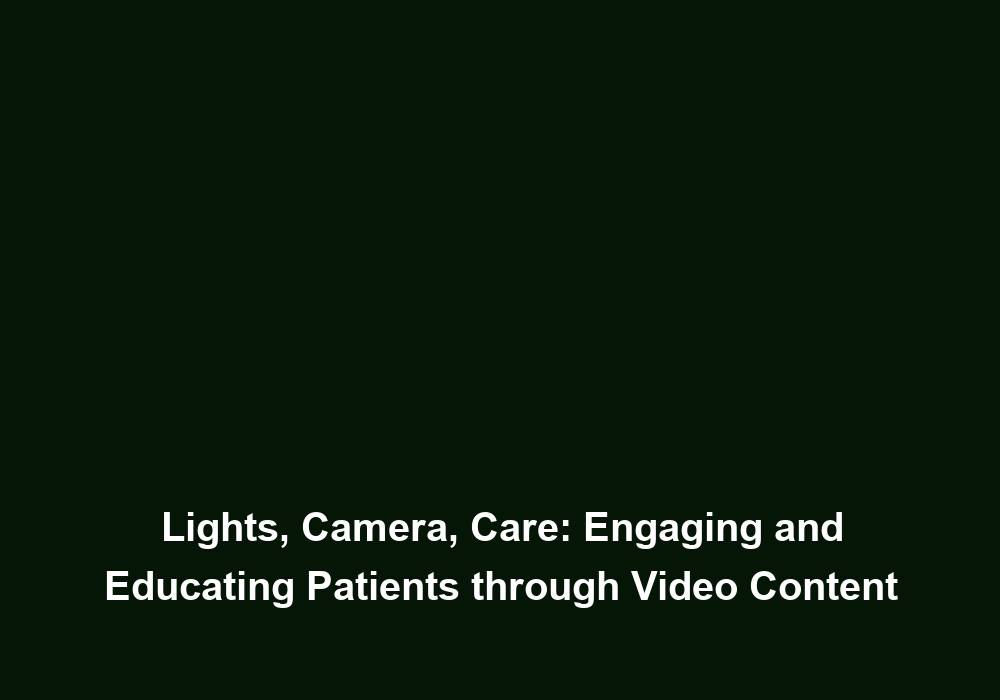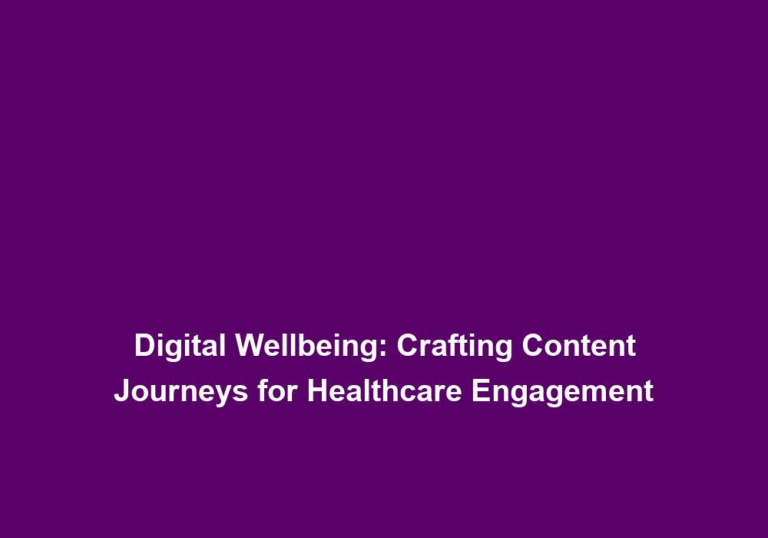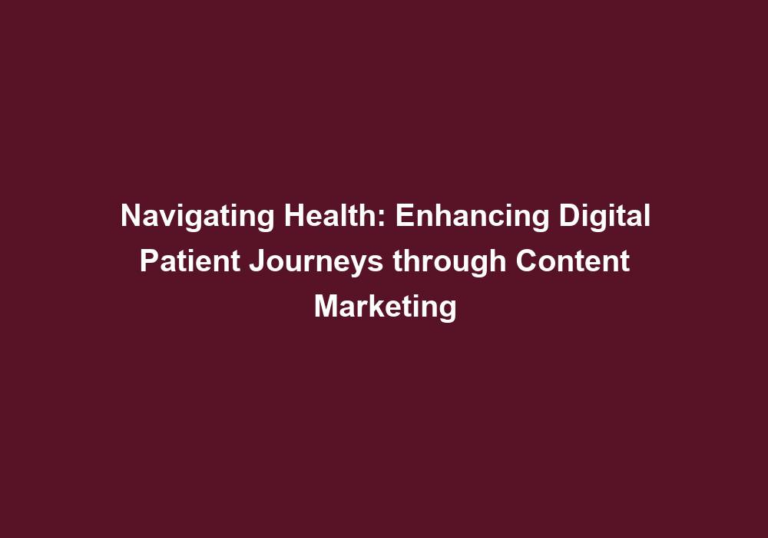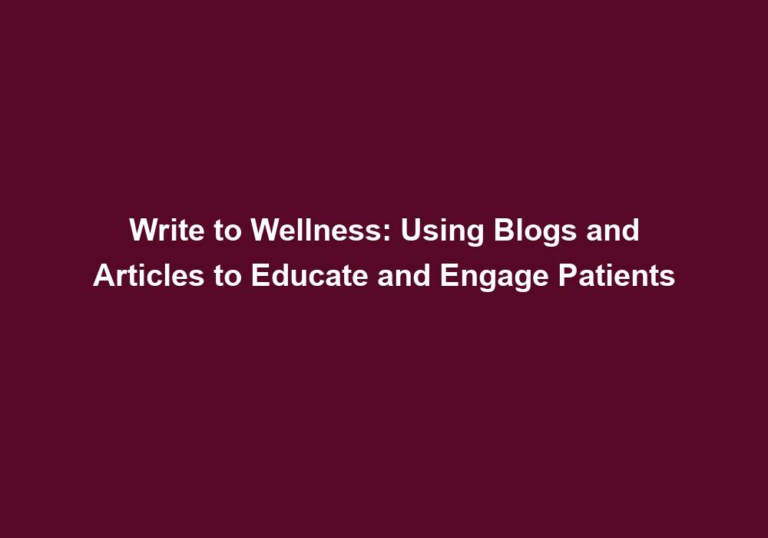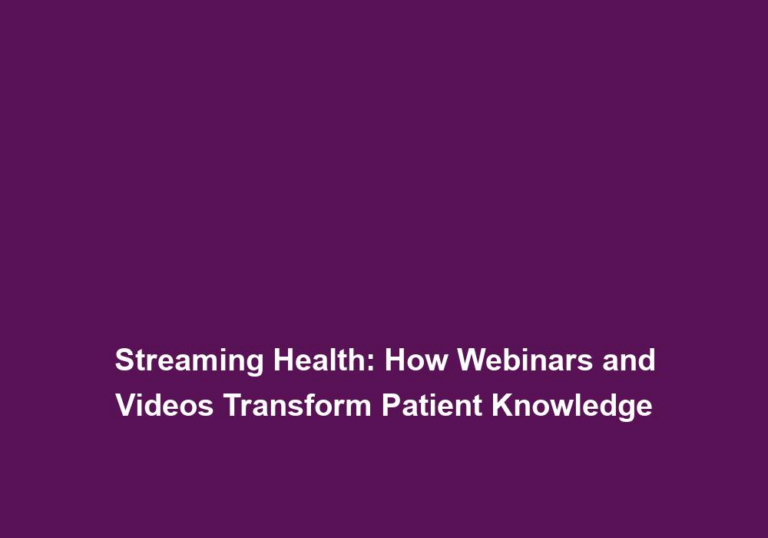Lights, Camera, Care: Engaging and Educating Patients through Video Content
In today’s fast-paced world, where information is readily available at our fingertips, healthcare providers are constantly seeking innovative ways to engage and educate patients. One such method that has gained significant popularity is the use of video content. With the increasing accessibility of smartphones and the internet, videos have become an effective tool for sharing valuable medical information, promoting patient empowerment, and enhancing the overall patient experience.
The Power of Visual Communication
Visual communication has long been recognized as a powerful tool for conveying information. It allows complex concepts to be presented in a more engaging and easily understandable format, breaking down barriers of language and literacy. In the healthcare industry, where complex medical jargon and procedures can often overwhelm patients, video content serves as a bridge for effective communication.
Benefits of Video Content for Patient Engagement
- Increased Patient Understanding: Video content enables healthcare providers to explain medical conditions, treatment options, and preventive measures in a visual and interactive manner. This enhances patient understanding, as they can see and hear explanations, demonstrations, and testimonials from healthcare professionals, leading to more informed decision-making.
- Videos provide a visual representation of medical concepts, making it easier for patients to grasp complex information.
- Interactive elements such as diagrams and animations can further enhance understanding by breaking down complicated procedures into simple steps.
- Testimonials from healthcare professionals and patients can offer real-life examples and instill confidence in the effectiveness of treatments.
- Improved Patient Compliance: By providing clear instructions on medication administration, post-operative care, or pre-procedural preparations, video content helps patients adhere to prescribed treatment plans. Patients are more likely to follow instructions when they can visually see and hear proper techniques, reducing the risk of complications and improving overall health outcomes.
- Videos can demonstrate correct techniques for self-administration of medications, ensuring patients take their medications as prescribed.
- Step-by-step instructions for post-operative care can be visually depicted, reducing the chances of errors or complications.
- Pre-procedural videos can prepare patients mentally and physically, increasing their compliance with necessary preparations.
- Enhanced Emotional Connection: Videos have the unique ability to evoke emotions and create a personal connection with viewers. Through storytelling and real-life patient experiences, healthcare providers can foster empathy and compassion, establishing trust and building strong patient-provider relationships.
- Storytelling in videos can create a narrative that resonates with patients, making them feel understood and valued.
- Sharing patient testimonials allows viewers to relate to others who have gone through similar experiences, providing a sense of camaraderie.
- Emotional storytelling can inspire hope and motivate patients to actively participate in their own healthcare journey.
- Accessible Information: Video content can be easily accessed and shared across various platforms, including social media, websites, and patient portals. This accessibility ensures that patients can revisit the information at their convenience, share it with family members or caregivers, and actively participate in their own healthcare journey.
- Videos can be uploaded to patient portals, allowing patients to access them at any time and from any device.
- Social media platforms provide an opportunity to reach a wider audience and facilitate the sharing of educational videos.
- Easily shareable videos enable patients to involve their support system, such as family members or caregivers, in their healthcare decisions.
Effective Strategies for Creating Engaging Video Content
While the benefits of video content are clear, it is crucial to create engaging and informative videos that captivate the audience. Here are some strategies to consider:
1. Know Your Audience
Understanding the demographics, preferences, and needs of your target audience is key to developing relevant and impactful video content. Consider factors such as age, language proficiency, and health literacy levels to tailor your videos accordingly. For example, if your target audience comprises older adults, ensure clear visuals, larger fonts, and simplified language.
- Conduct market research and surveys to gather insights about your target audience’s preferences and needs.
- Segment your audience based on demographics and create video content specifically designed for each segment.
- Consider incorporating multilingual options or subtitles to cater to a diverse audience.
2. Storytelling and Patient Testimonials
Utilize the power of storytelling to engage viewers emotionally. Share inspiring patient success stories, testimonials, or interviews to provide real-life examples of how your healthcare services have made a difference. This humanizes your content and creates a stronger connection with the audience.
- Identify compelling stories within your patient population that highlight positive outcomes or experiences.
- Incorporate interviews with patients, allowing them to share their personal journeys and the impact your healthcare services have had on their lives.
- Use storytelling techniques such as narrative arcs and emotional hooks to captivate the audience and keep them engaged.
3. Keep it Concise and Engaging
Attention spans are often short when it comes to online videos. Keep your videos concise and focused, delivering information in bite-sized segments. Use engaging visuals, animations, and graphics to enhance understanding and maintain viewer interest.
- Break down complex information into shorter videos, focusing on one topic or concept per video.
- Use visually appealing graphics and animations to illustrate key points and make the content more engaging.
- Incorporate storytelling elements to create a narrative flow and maintain the viewer’s interest throughout the video.
4. Optimize for Search Engines
To ensure your videos reach a wider audience, optimize them for search engines. Use relevant keywords in video titles, descriptions, and tags. Additionally, provide accurate transcripts or closed captions to improve accessibility and searchability.
- Conduct keyword research to identify the most relevant and commonly searched terms related to your video content.
- Incorporate these keywords naturally throughout your video’s metadata, including titles, descriptions, and tags.
- Provide accurate and comprehensive transcripts or closed captions to improve search engine visibility and cater to viewers with hearing impairments.
5. Encourage Interaction and Feedback
Engage with your viewers by encouraging them to comment, ask questions, or share their experiences. Respond promptly to their inquiries and provide additional information as needed. This fosters a sense of community and encourages active participation.
- Prompt viewers to leave comments or ask questions at the end of your videos.
- Monitor and respond to viewer comments promptly, addressing their concerns or providing further clarification.
- Consider hosting live Q&A sessions or webinars to facilitate direct interaction with your audience.
Conclusion
Video content has revolutionized patient engagement and education in the healthcare industry. By leveraging the power of visual communication, healthcare providers can effectively convey complex medical information, enhance patient understanding, and promote active involvement in healthcare decisions. Incorporating video content into your patient education strategies can improve patient compliance, strengthen relationships, and ultimately lead to better health outcomes. So, lights, camera, care – start engaging and educating your patients through captivating video content today.
Note: The provided content is in markdown format and can be easily converted into HTML or other required formats.

